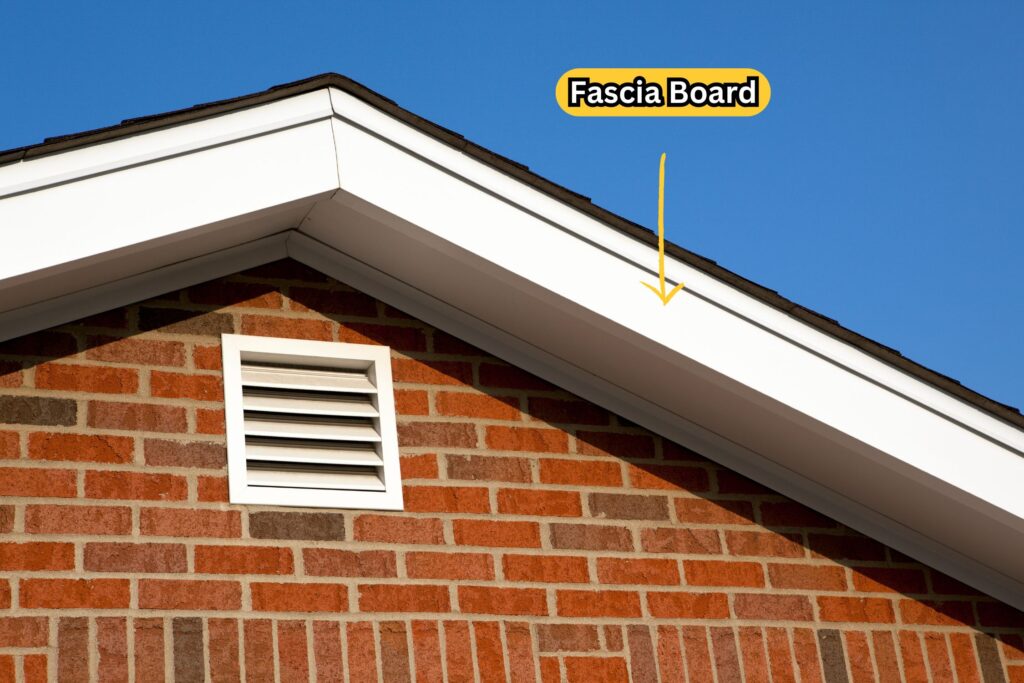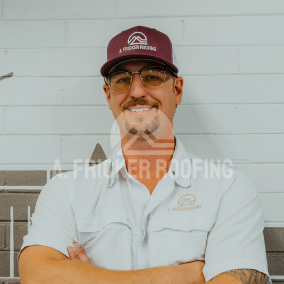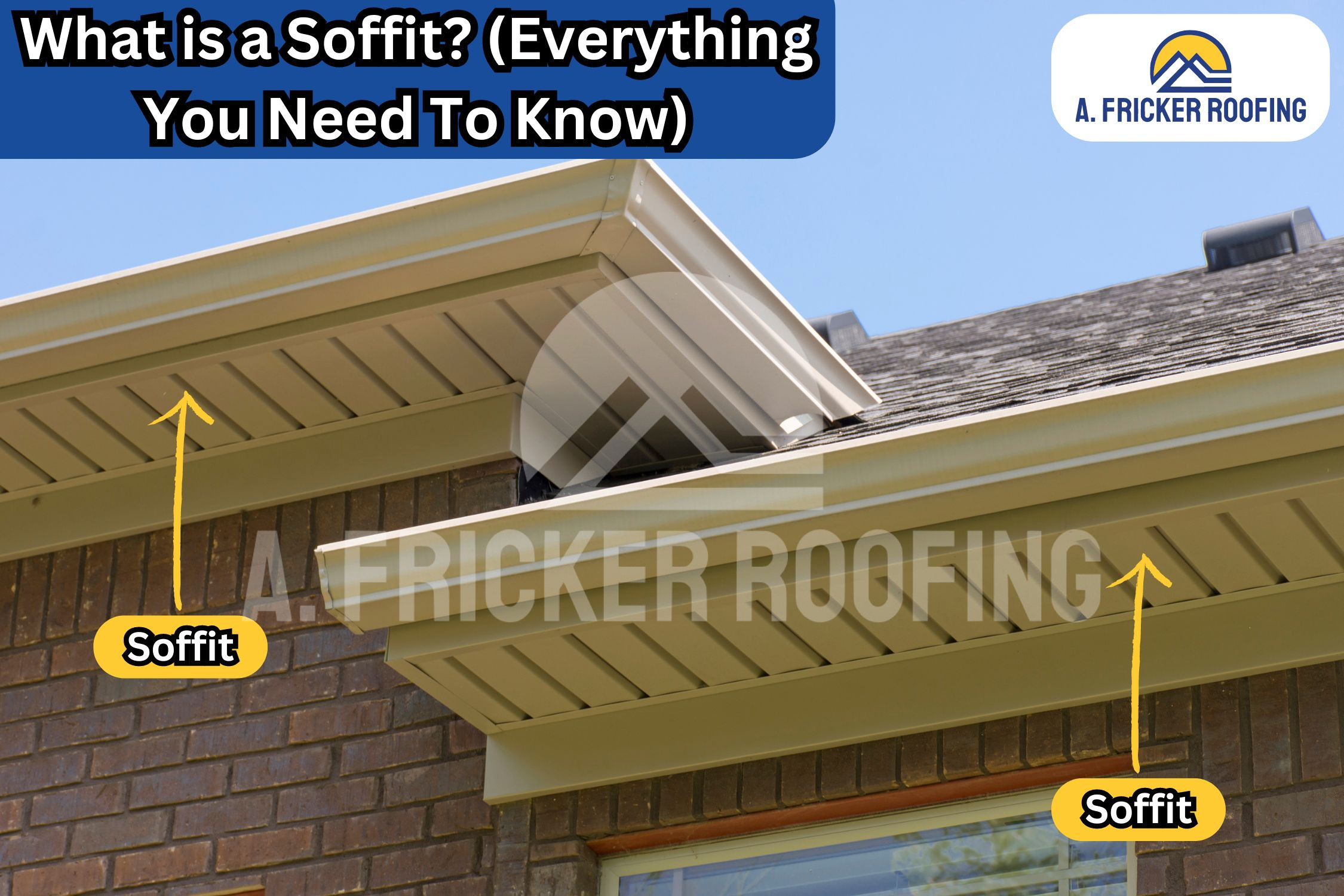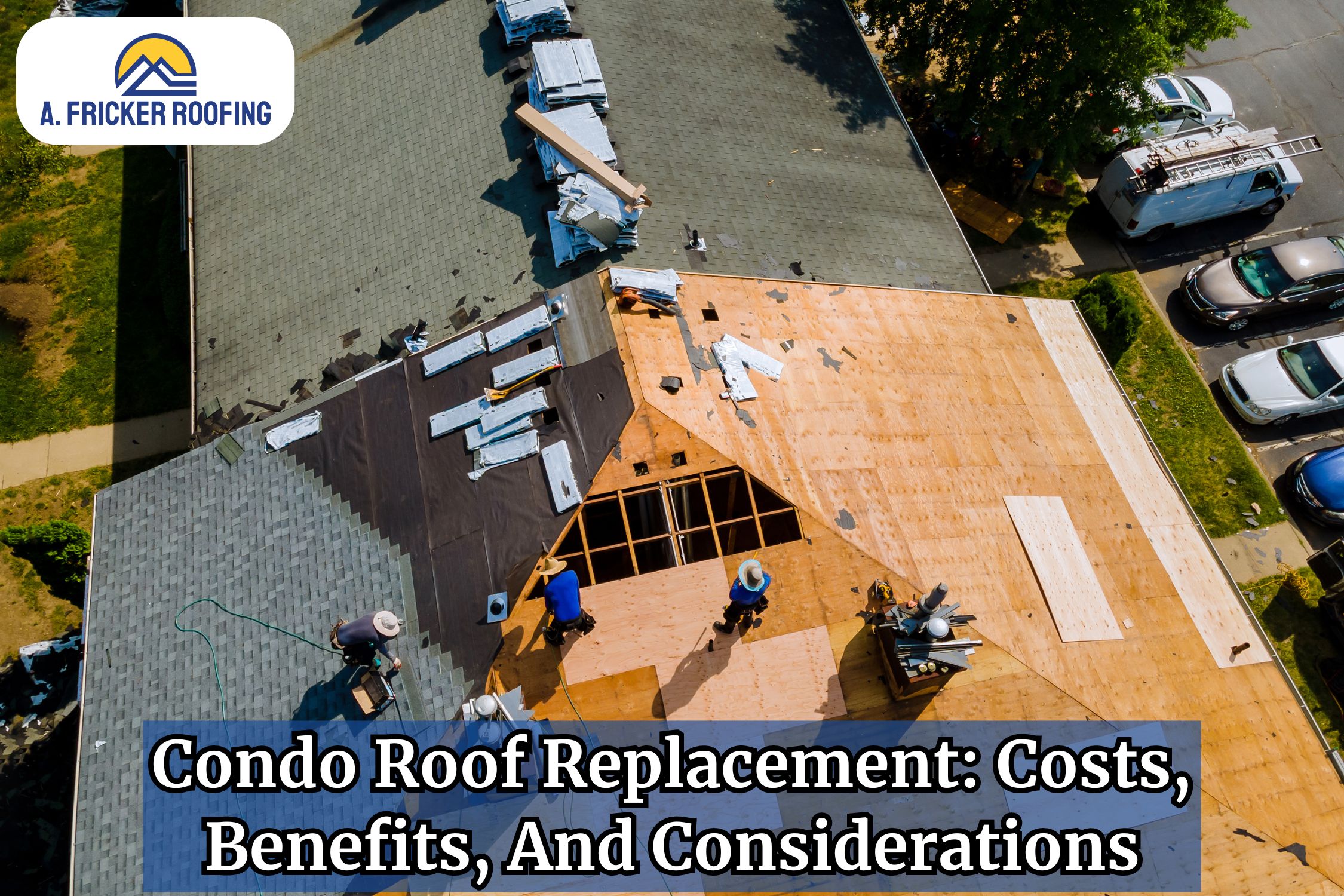
If you’re reading this, you’re likely looking for clarity on two crucial components of your home’s exterior: soffit and fascia. Both parts play an important role in protecting your home and are often used interchangeably. But these are not the same!
As a roofing company with decades of experience, we are here to decode soffit and fascia.
We will guide you through the differences between soffit vs. fascia and explain why they are essential for your home. Let’s dive in and discover what these terms really mean.
Learning The Basics: What Are Soffit and Fascia?
Before we delve into the differences, let’s get a clear picture of what soffit and fascia are. Both are parts of the roofing system and play crucial roles in protecting your home, forming the roofline, and enhancing aesthetic appeal. While they might not be as noticeable as the shingles or gutters, they are vital to the overall function and look of your home.
Soffits

The soffit is the horizontal part beneath the roof’s overhang. When you stand under the eaves of your roof and look up, you’re looking at the soffit. This component is important for a couple of reasons:
- Ventilation: Soffits often have small holes or vents that allow air to circulate through the attic. This helps to prevent moisture buildup and keeps your attic cool, which can reduce energy costs and prolong the life of your roof.
- Protection: Soffits protect the rafters from the elements, preventing rain, snow, and wind from damaging the structure of your home.
- Aesthetics: A well-maintained soffit can enhance the look of your home by providing a clean, finished appearance.
Fascia Board

The fascia is the vertical finishing edge connected to the ends of the rafters, trusses, or the area where the gutter is attached to the roof. It’s the board you see at the end of your roofline. Here’s why roof fascia boards are important:
- Support for Gutters: Fascia boards hold the gutters in place, ensuring they function correctly to direct water away from your home.
- Protection: As you know, fascia boards cover the ends of the rafters. This helps protect them from moisture and weather damage.
- Aesthetic Appeal: Fascia boards create a smooth, even appearance along the roof’s edge, which adds to your home’s curb appeal.
Today we will mostly be talking about their differences, but if you want to dive deeper into soffits and fascia, check out our following blog posts:
Soffit vs. Fascia: All You Need To Know
Now that we know what soffit and fascia are, let’s talk about the core of our blog post. In this section, we talk about the main differences between fascia and soffit:
Location
The soffit can be found under your roof overhang. Though it is not usually visible from the front, you can see it when you look up when standing beneath the eave. It’s positioned horizontally, connecting the side of the house to the roof’s outer edge.
On the other hand, the fascia is the vertical board attached to the ends of the rafters or trusses along the edge of the roof. It’s the visible border you see at the roofline, directly above the soffit.
Function
We know that both soffits and fascia protect the interior structure of your roof such as rafters, beams, and trusses from water damage and pest infestations, however, there are other functions too.
For example, the primary purpose of soffits (apart from acting as a cover) is ventilation. Soffits are mostly vented and allow air to circulate through the attic.
Fascia boards provide essential support for the gutters, keeping them securely in place to channel water away from your home effectively.
Soffit And Fascia Materials
Soffit and fascia can be made from different types of materials. The choice often depends on the climate, style of the home, and personal preference.
Here are some popular materials that you can choose from:
Vinyl
Vinyl is a popular choice for both soffit and fascia due to its durability and low maintenance requirements. It’s resistant to moisture, which helps prevent rot and decay, making it an ideal option for areas with high humidity or rainfall. Just like siding, vinyl soffits and fascia also come in various colors and styles, allowing homeowners to match them with their home’s aesthetic.
Aluminum
Known for its strength and resistance to weather, aluminum is another excellent material for soffit and fascia. It is lightweight yet sturdy, providing reliable protection against the elements. Aluminum doesn’t rust, which is a significant advantage in areas prone to rain or snow. Additionally, it can be painted in different colors to suit the design of your home.
Composite/Fiber Cement
Composite materials, like fiber cement, are favored over natural wood for their durability and environmental benefits. These materials are made from a combination of recycled materials, offering a sustainable choice for homeowners. Fiber cement is highly resistant to weather, pests, and fire, making it a robust option for soffits and fascia. It also mimics the appearance of wood, providing a classic look without the high maintenance requirements of traditional wood materials.
Types
Soffits come in various types, including vented, non-vented, continuous, and single. Vented soffits feature perforations that allow air circulation, while non-vented ones offer a solid, seamless appearance but may require alternative ventilation solutions. Continuous soffits provide a consistent look across the eaves, whereas single soffits are installed in specific sections.
Fascia, on the other hand, mainly differs based on the materials used, such as wood, vinyl, and aluminum, each offering distinct advantages in terms of durability, maintenance, and aesthetics.
Sizes
Fascia boards are usually available in sizes that match common rafter sizes to ensure proper coverage. The most frequently used sizes are 1-by-6 inches and 1-by-8 inches.
Soffits generally come in widths ranging from 16 to 24 inches. The thickness is commonly around ¼ inch, which helps with installation and ensures durability.
Top Brands To Choose For Soffit and Fascia
When looking for high-quality soffit and fascia, there are several top brands you should consider.
LP® SmartSide®
This brand offers engineered wood soffit and fascia products known for their strength and versatility. LP SmartSide products are pre-primed for painting and provide excellent protection against moisture, rot, and termites.
Rollex
Rollex provides aluminum soffit and fascia with options for vented, non-vented, and hidden vent profiles. Their products are low maintenance, eco-friendly, and come with a lifetime lifetime warranty.
Ply Gem
Mastic, a part of Ply Gem, is a well-regarded brand for soffit and fascia products, offering both vinyl and aluminum options. Mastic’s products are known for their durability, aesthetic versatility, and low maintenance needs.
How We Can Help
Whether you’re building a new home or updating an existing one, paying attention to soffit and fascia can make a significant difference in your roofing’s overall performance and appearance. If you have any questions or need professional advice, don’t hesitate to contact A. Fricker Roofing and Waterproofing in Tulsa, OK.
We are a team of expert home improvement specialists that can take care of your home exteriors. Contact us today at (918) 402-7167.



